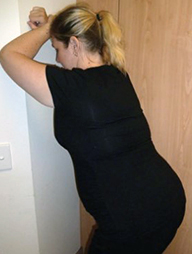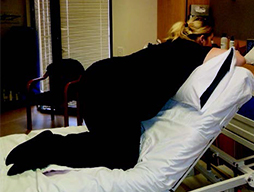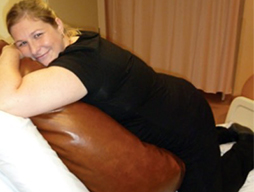Helpful labour and birth positions
These positions may be useful during pregnancy to help move your baby into the right position for labour and during delivery. All positions recommended below for the first and second stages of labour use gravity to assist in delivering your baby.
In the first stage, walking between contractions may assist in reducing duration of labour. Use the positions that give you the greatest comfort and control in the first stage of labour.
Throughout your labour and delivery, it is important to listen to your body and your midwife for position options.
First stage of labour
During the first stages of labour, the cervix (opening of the womb) dilates (widens) from zero (0) to 10 cm.
When you first start to feel contractions, your midwife may suggest the following positions.
 |
 |
 |
 |
|||
|
Squats |
Lunges | Pelvic rocking | Rocking with a partner |
 |
 |
|
| Train position |
Kneeling over bed |
Managing the premature urge to push
When your cervix is 7–8 cm dilated, you may have an overwhelming urge to push.
It is important that you don’t push during this stage. Your midwife can guide you through this stage and you can try the following positions to ease this urge:
 |
 |
|
|
Side lying |
Head down, bottom up |
Second stage of labour
Once your cervix is 10 cm dilated it is time to push. Your midwife can guide you through this stage and the following positions may be helpful:
 |
 |
 |
||
| Supported kneeling |
Supported sitting |
Side lying or elevated seated positions |
More information
Find out more about physiotherapy during pregnancy, pregnancy care, or return to the Maternity page.

